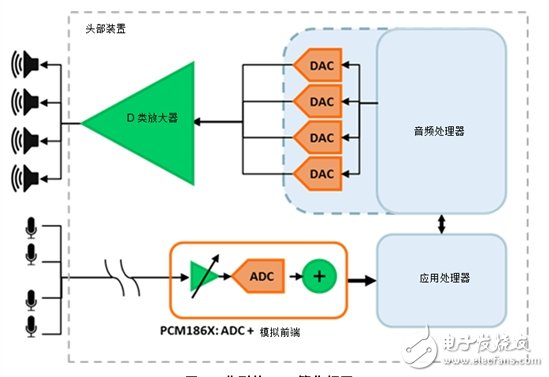In order to find a creative intelligent voice design solution, the 2016 Xunfei Intelligent Voice Design Competition organized by I Love Solution Network and Keda Xunfei is in hot registration. Up to now, we have received nearly 100 entries and excellent design solutions. This article will introduce a car cockpit sound enhancement system developed by one of the contestants for automotive noise reduction, which is designed to improve cabin hull noise and enhance the user experience. At present, I have successfully passed the primaries of the I Love Program Network Competition. The participating team is very happy to share their design ideas and program framework for peer reference. Next, let's take a look at the specific details of the project!
I believe that most drivers will definitely encounter a situation where they must make a call through the hands-free system while driving. When driving, you want to make sure that the person answering the phone can clearly hear your voice, then they must expect the cockpit to systematically eliminate noise, such as air conditioning airflow, wind noise and road noise inside the cabin. In this case, the car needs to be identified by noise. We use microphone array technology to achieve car cockpit sound enhancement and eliminate noise.
Audio technology for easy cabin comfort
We know that the sound is captured by the microphone array; in this case, the array includes four analog electret condenser microphones. A typical electret condenser microphone approaches the current source when biased, and an analog to digital converter (ADC) digitizes the audio signal from the microphone array, which is then processed by the application processor.

Figure 1: Typical CSE simplified block diagram
The application processor enables specific functions of the CSE system according to the processed algorithm. To reduce unwanted noise, the processor performs an active noise reduction (ANC) algorithm.
The system is designed to reduce low frequency noise in the car's cockpit and operate at any stage of the car's operation, whether the audio system is on or off. The microphone array captures sound from the drive train and creates a precisely timed inverted audio signal that is then sent to the amplifier to drive the system speakers and subwoofer without affecting the music or call volume.
To enhance engine sound, the processor performs an engine sound enhancement (ESE) or sound actuator algorithm by playing a pre-recorded engine sound through a stereo system determined by engine load and RPM, or by having the microphone array capture sound signals from the transmission system. The processor amplifies and tunes this sound signal to make the driver not disgusted with the engine sound.
To efficiently implement a high performance hands-free system, the processor implements a microphone beamforming algorithm (MBF). From the microphone to the beam on the driver's face, the system only "hears" the sound present in the beam and rejects sound from other directions. Each microphone in the microphone array is separated by a very specific distance specified by the system sampling frequency. This distance affects the time it takes for the sound to reach each particular microphone, providing the system with sufficient information about the direction and distance of the sound source and rejecting any sound outside of the virtual beam.
The integrated analog front end is integrated into the ADC to help improve signal-to-noise ratio (SNR) and achieve higher quality audio capture. However, this approach is only one of many ways to achieve this goal. For example, a digital I2S microphone can also be used, but this alternative is more expensive than using an analog microphone and a multi-channel ADC. This solution is finally confirmed through multi-angle considerations such as cost, performance, and implementation, and has a high market advantage!
Barium titanate lead-free piezoelectric ceramics are important basic materials for the development of modern science and technology, which was widely used in the manufacture of ultrasonic transducers, underwater acoustic transducers, electroacoustic transducers, ceramic filters, ceramic transformers, ceramic frequency discriminators, high voltage generators, infrared detectors, surface acoustic wave devices, electro-optic devices, ignition and detonation devices, and piezoelectric gyroscope and so on.
Application: military, ocean, fishery, scientific research, mine detection, daily life and other fields.

Piezoelectric Ring,Lead Free Piezoelectric Ring,Piezo Electric Ring,Lead Free Piezo Rings
Zibo Yuhai Electronic Ceramic Co., Ltd. , https://www.yhpiezo.com